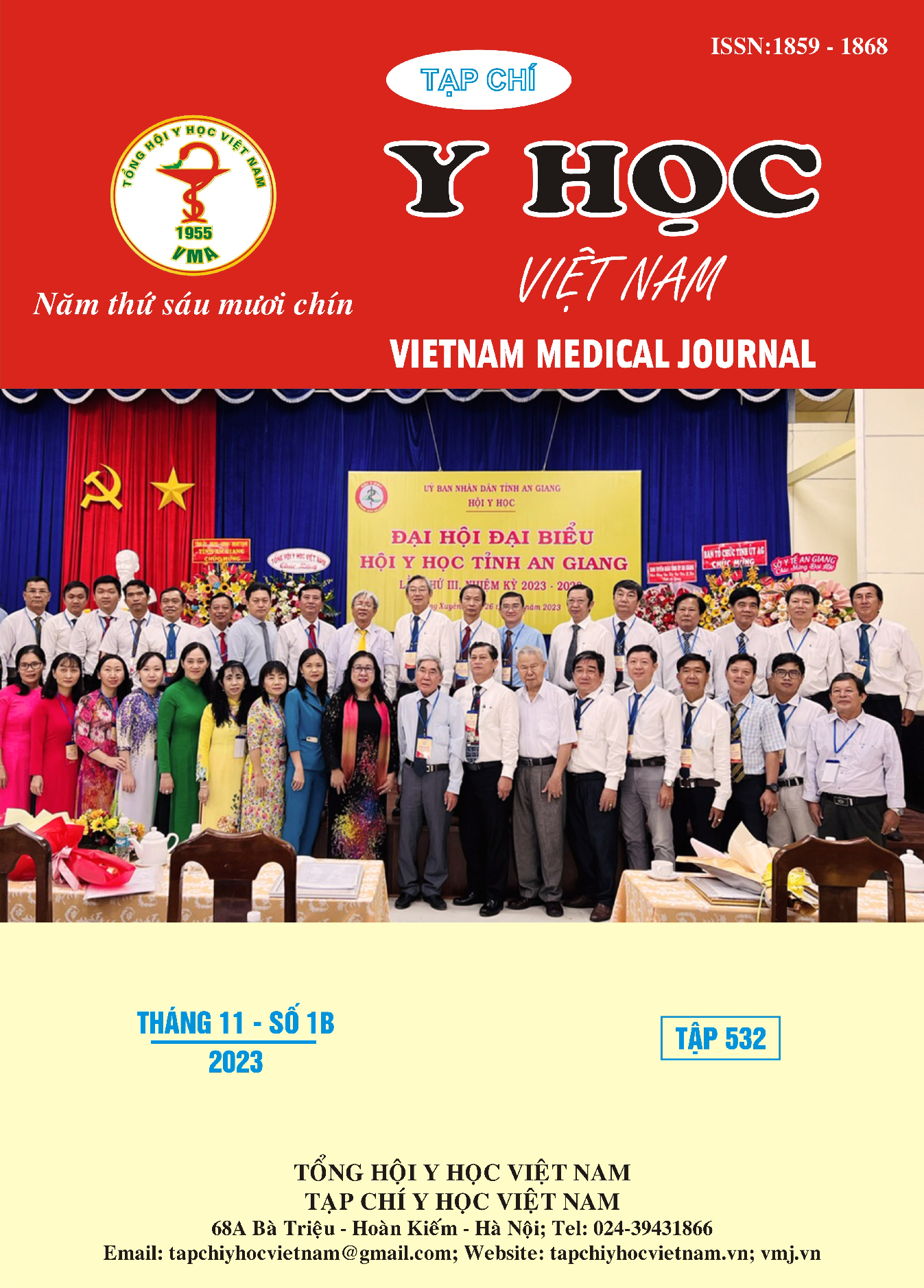COMPARISON OF CORNEAL ENDOTHELIAL CELL CHANGE AFTER CATARACT SURGEY IN EYES WITH PSEUDOEXFOLIATION SYNDROME
Main Article Content
Abstract
Purpose: To compare corneal endothelial cell damage after cataract surgery in eyes with and without pseudoexfoliation syndrome (PEX). To evaluate the correlations between endothelial cell density loss and pre-operative and intra-operative parameters in eyes with PEX. Methods: Prospective case-control study. This study with 94 eyes was divided into two groups with PEX (47 eyes) and without PEX (47 eyes), which indicated phaco surgery from August 2022 to August 2023 in Ho Chi Minh Eye Hospital. Demographic data, preoperative data, surgical parameters, endothelial cell parameters are assessed before and after surgery in 1-week, 1-month, and 3-month periods. Results: The mean average age of PEX was similar to control group, 73,47 ± 7,88 and 70,81 ± 8,45 respectively. Sex ratio, visual acuity, intraocular pressure, and cataract grading were similar between PEX and non-PEX group. Mean ECD was significantly lower in PEX group than in control group preoperative (p=0,016). Hexagonal cell percentage (HEX%) and coefficient of variation (CV%) did not differ significantly between the 2 groups. Surgical parameters: Mean phaco time (p=0,001), cumulative dissipated energy (CDE) (p=0,047), and fluid (<0,001) were significantly greater in PEX group and mean pupil diameter (<0,001) was statically smaller in PEX group. There was no statical difference of average phaco power (FP3) between groups. 1 week, 1 month, and 3 months post-operatively ECD of PEX were significantly lower than non-PEX group (p<0,001). Endothelial cell loss in PEX group was higher throughout the follow-up period. CCT, HEX%, and CV% were found similar between groups. Correlations between endothelial cell loss and patients‘ age, cataract grading, phaco time, CDE, FP3 were found in PEX group. Conclusion: Endothelial cells of patients with PEX were more vulnerable to phaco surgery than non-PEX patients. The visual outcome of non-PEX patients after surgery was better than those with PEX. The ECD loss varied with surgical invasions due to patients‘ age, cataract grading, phaco time, CDE, and FP3.
Article Details
Keywords
pseudoexfoliation syndrome, phacoemulsification, corneal endothelial cell loss.
References
2. Ken Hayashi Shin-ichi Manabe, Koichi Yoshimura, Hiroyuki Kondo. Corneal endothelial damage after cataract surgery in eyes with pseudoexfoliation syndrome. Cataract Refract Surg 2013;39:881-7.
3. Sheybani Joel R. Palko; Owen Qi; Arsham. Corneal Alterations Associated with Pseudoexfoliation Syndrome and Glaucoma: A Literature Review. Journal of ophthalmic and Vision research. 2017;13(3):16.
4. Gowri l. Kanthan Paul Mitchell, George Burlutsky, Elena Rochtchina, Jie Jin Wang. Pseudoexfoliation and incidence of cataract. Am J Ophthalmol. 2012.
5. Naumann G. O., Schlotzer-Schrehardt U. Keratopathy in pseudoexfoliation syndrome as a cause of corneal endothelial decompensation: a clinicopathologic study. Ophthalmology. 2000;107(6):1111-24.
6. Eren Ekİci Ali Keles, Süleyman Korhan Kahraman. Early Postoperative Effects of Uncomplicated Phacoemulsi¦cation Surgery on Corneal Endothelial Cells and Thickness in Patients with Pseudoexfoliation Syndrome. Research Square. 2021.
7. Demircan S Atas M, Yurtsever Y. Effect of torsional mode phacoemulsification on cornea in eyes with/without pseudoexfoliation. Int J Ophthalmol. 2015;8(2).
8. Ramage A. Fahmy Mahmoud M. Mohamed Genidy, Raafat M.A. Abdalla, Hosny A. Zein. Corneal endothelial evaluation after phacoemulsification in eyes with pseudoexfoliation syndrome. Delta Journal of Ophthalmology. 2022;23.
9. Kuldar Kaljurand Pait Teesalu. Exfoliation Syndrome as a Risk Factor for Corneal Endothelial Cell Loss in Cataract Surgery. Annals of Ophthalmology. 2007;39:7.
10. Hassan S. Yousef Ibrahim Amer, Shymaa A.A. Thabet. Specular microscopic changes of corneal endothelial cells after phacoemulsification in patients with pseudoexfoliation. Al-Azhar Assiut Medical Journal. 2022;20.


